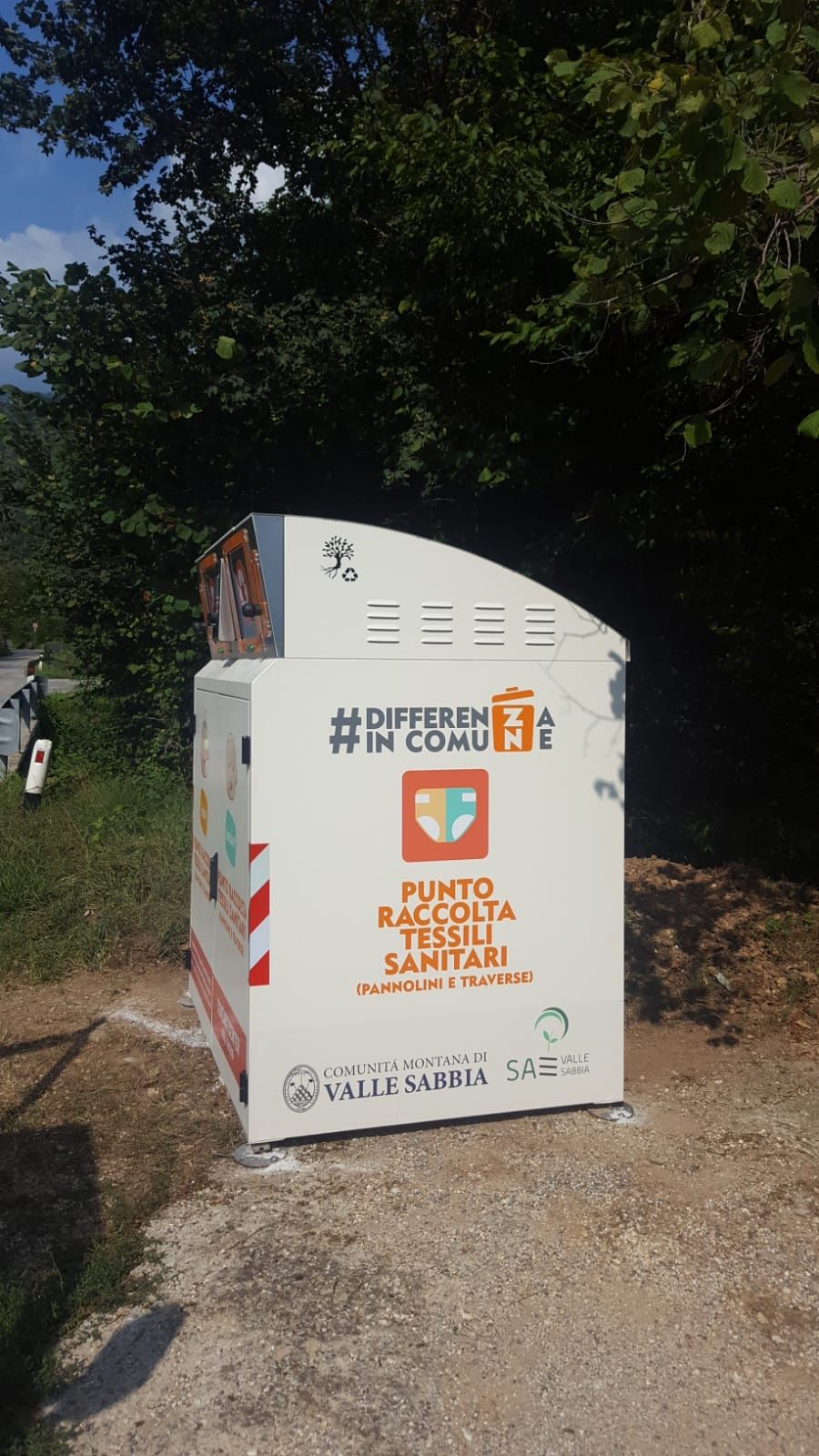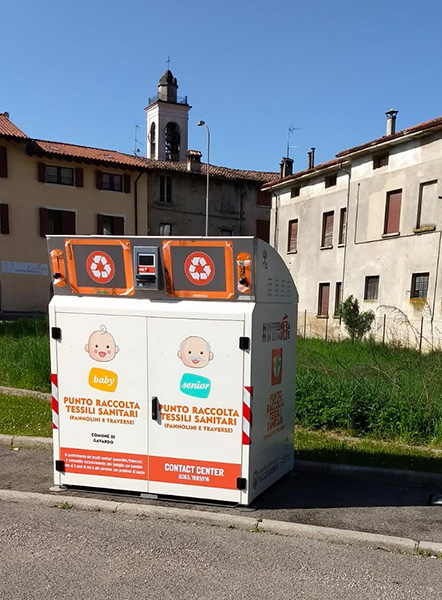Management of nappies and sanitary textiles in Valle Sabbia
SAE Valle Sabbia srl is the company of the Valle Sabbia Mountain Community responsible for energy management and, since 2018, for waste collection services.
During the reorganization phase of the collection system, 34 controlled-access ArcoPOINT drop-off stations were installed for the management of nappies and sanitary textiles.

SAE has implemented a service reorganization that includes door-to-door collection in some municipalities and a mixed collection system in others.
In all cases, a system for identifying emptying and drop-off operations has been introduced, using UHF RFID technology supplied by Sartori Ambiente.
Initial Situation
The 2017 separate collection data, published by the Provincial Waste Observatory before the sector was transferred to the Mountain Community’s company – SAE – indicated a separate collection rate of 50%.
Objectives
- Provide a dedicated service for users following the introduction of door-to-door collection for residual dry waste.
- Collect data on the actual production of nappies and sanitary textiles.
Solutions
In mid-2018, Altares installed 34 controlled-access ArcoPOINT drop-off stations dedicated exclusively to the collection of sanitary textile waste, serving an area of over 40,000 inhabitants across 12 municipalities.
The users who registered for this additional service in 2021 numbered 3,195.
Sanitary textile waste (nappies and incontinence pads) can be disposed of at specific collection stations located throughout each municipality and equipped with a user identification system.
The service is reserved for:
- Parents with children up to 3 years old. In this case, the parents’ CRS card is automatically activated at the child’s birth.
- People with health issues requiring the service. In this case, citizens must submit a request to the Municipality along with a document certifying the need.
Citizens can consult the location of ArcoPOINT stations and other special waste containers directly on the SAE website.
Emptying of the controlled-access drop-off stations is carried out using standard vehicles dedicated to the door-to-door service (5 m³ and 7 m³ compactors) during the scheduled weekly round for residual waste collection.
In 2019, Sartori Ambiente, in collaboration with SAE Valle Sabbia, conducted a first analysis of the data collected both from field equipment and from detection systems installed on collection vehicles.
This analysis aimed to measure the system’s performance against the project’s expected results and identify any potential issues.
Results
The analysis of the different usage rates of the ArcoPOINT systems installed across the 12 observed municipalities showed excellent service participation: on average, over 50% of registered users made regular use of the service, with peaks exceeding 80%, such as in the municipality of Anfo.
The period under analysis covered the first 12 months of use, which is already statistically significant.
Regarding active users — those who made at least one drop-off since the systems were activated — the average usage was 1.64 drop-offs per week.
It should be noted that all the municipalities analysed already had a weekly door-to-door collection system for residual waste.
It is reasonable to assume that registered users also partially used that service to dispose of sanitary textiles, bringing the total number of “drop-offs” to 2.64 per week.
An analysis was also carried out to observe how drop-offs were distributed throughout the day.
The results showed that, although most occurred in the morning and early afternoon, drop-offs were generally distributed across the entire day.
The controlled-access sanitary textile collection points were distributed based on the number of residents and the territorial layout of each municipality.
In the most populous municipality, Gavardo, each station serves an area of approximately 2,000 residents, corresponding to 162 users registered for the service.
Analyses carried out in 2021 on the same sample of municipalities confirmed the initial participation rates, which remain between 50% and 80%.


